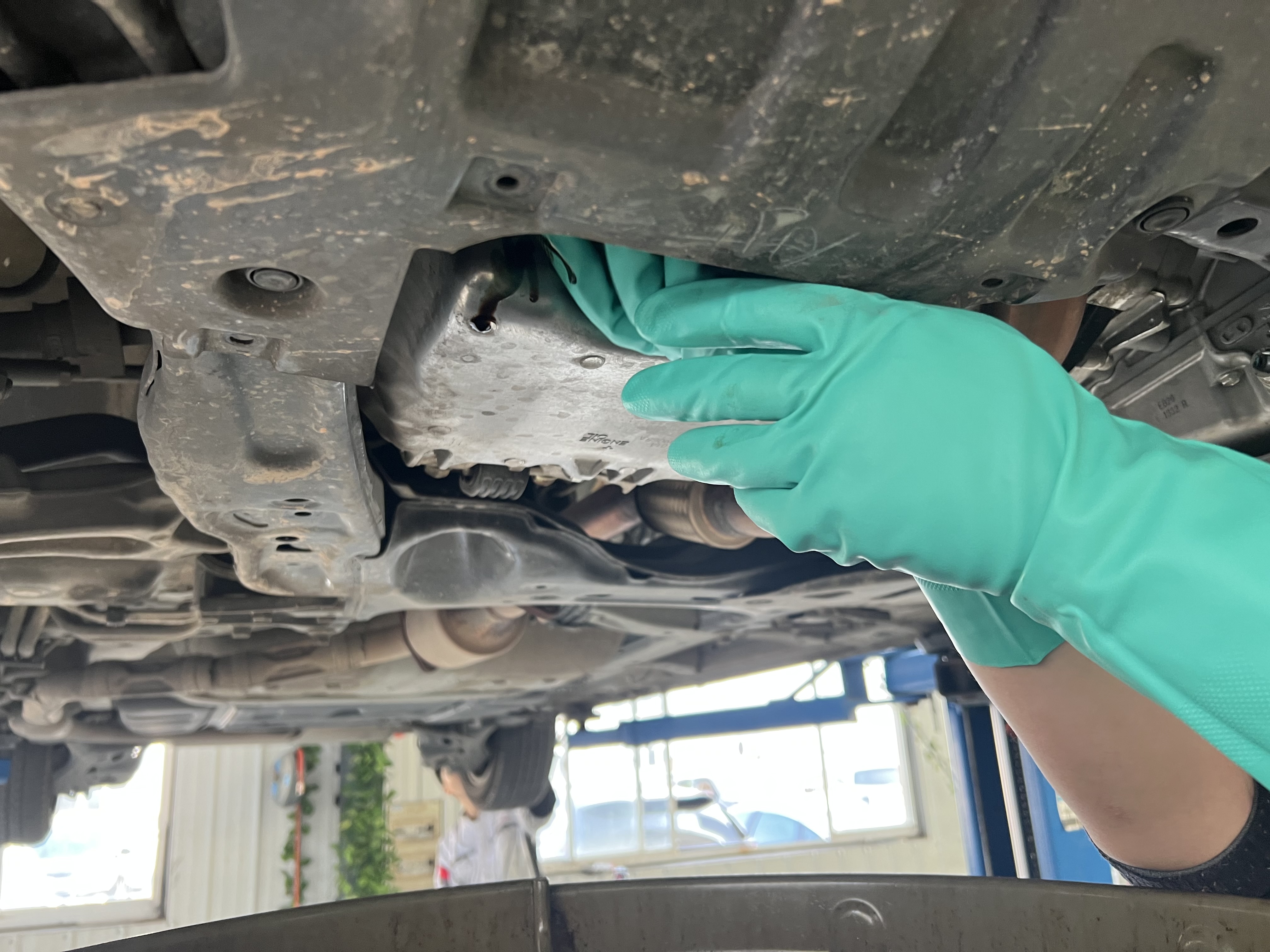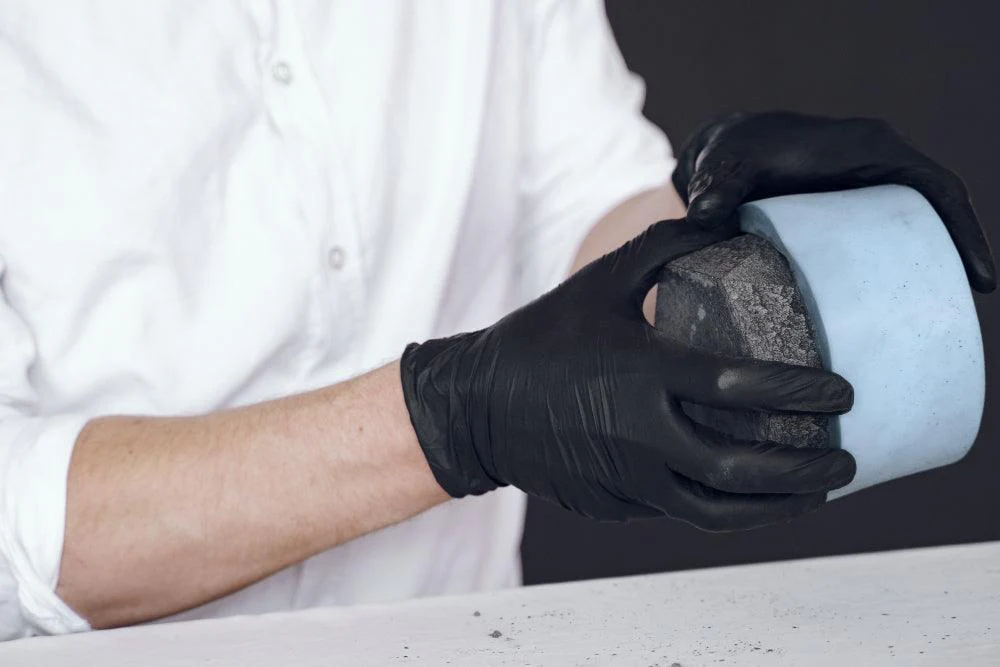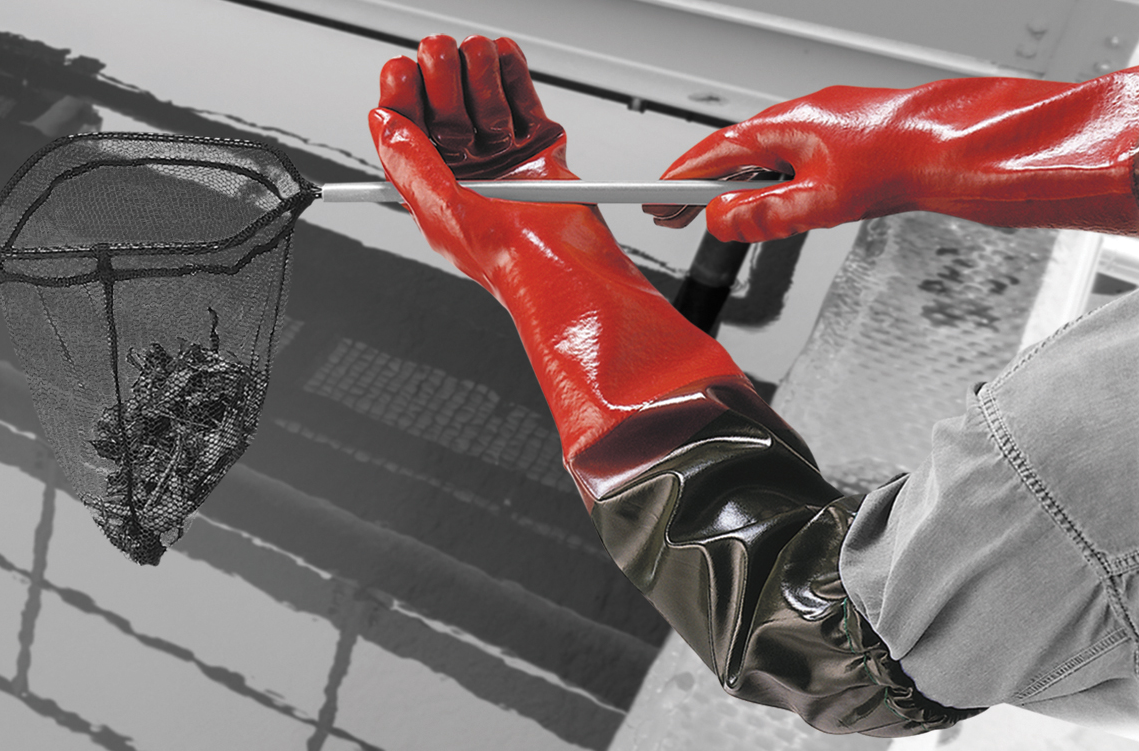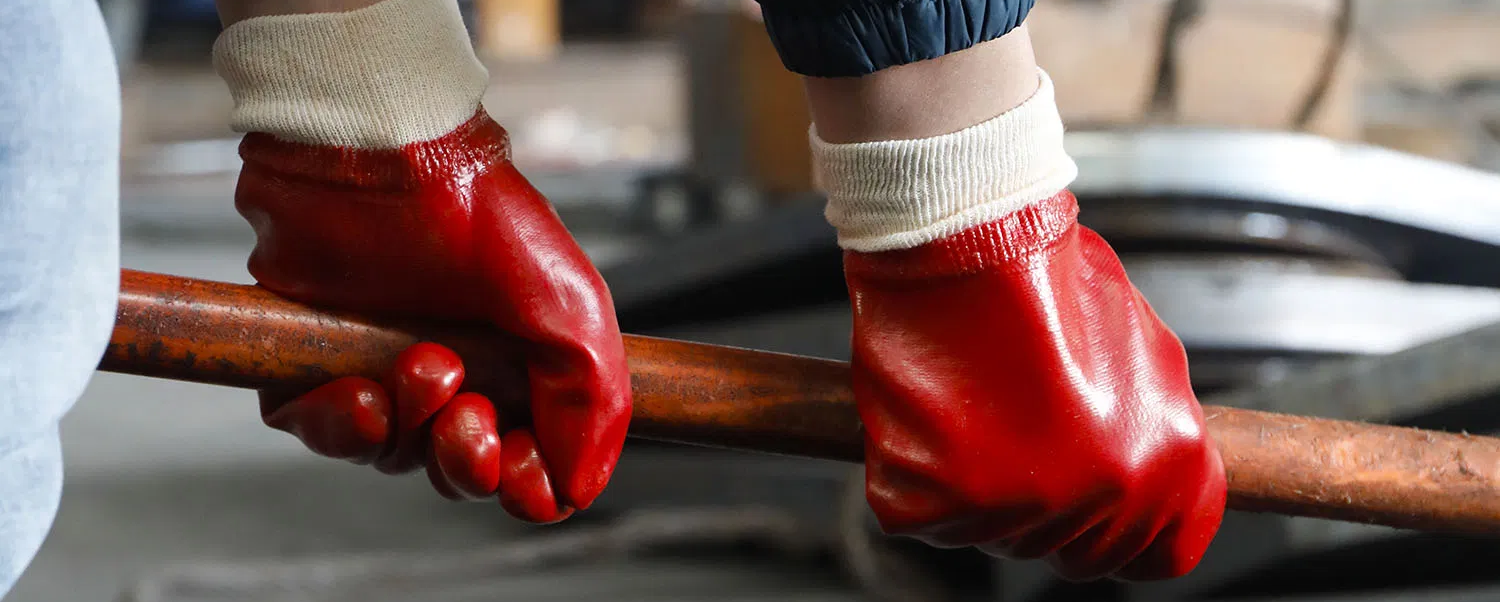Chemical gloves are designed to protect against strong acids, alkalis, organic solvents, oils, and other chemicals. They mainly prevent chemical penetration, corrosion, or contact that could harm the skin on the hands.

Nitrile Gloves
Nitrile gloves are made from a polymerization of acrylonitrile and butadiene. They offer excellent chemical resistance and tear resistance, making them the most commonly used gloves in chemical environments.
Advantages
- Nitrile gloves effectively resist common acids, alkalis, alcohols, and cleaning agents, preventing unnecessary accidents from chemical corrosion on the hands.
- They protect against petroleum solvents such as motor oil, diesel, mineral oils, and other light organic solvents like ethanol and isopropyl alcohol.
- They also prevent the absorption of toxic substances through the skin into the bloodstream, protecting you from irreversible harm.
- In environments with hazardous chemicals, nitrile gloves help prevent cross-contamination and reduce the spread of viruses.
Disadvantages
- Although nitrile gloves are chemically resistant, they offer minimal protection against chemicals such as acetone, MEK (methyl ethyl ketone), benzene, toluene, xylene, chloroform, and trichloroethylene.
- Prolonged contact or immersion in chemicals may cause nitrile gloves to lose their protective abilities; their penetration time is limited, making them unsuitable for long-term chemical exposure.
- In high-temperature environments, nitrile gloves may soften, deform, or melt, and therefore are not recommended for use with hot corrosive liquids or vapors.
- While more durable than latex gloves, nitrile gloves lack the flexibility and elasticity needed for fine tasks.
- High-strength oxidizing agents can cause nitrile gloves to degrade or corrode the material.
- Compared to general gloves, nitrile gloves may be more expensive, especially thicker industrial-grade nitrile gloves.
Uses
Nitrile gloves are ideal for laboratory work, reagent handling, chemical dilution, pharmaceutical tasks, handling oils, cleaning agents, lubricants, and other tasks in chemical environments.

Neoprene Gloves
Neoprene gloves are made from chloroprene monomer polymerization and offer stronger chemical resistance compared to nitrile gloves.
Advantages
- Neoprene gloves effectively resist strong acids like sulfuric acid, hydrochloric acid, phosphoric acid, and strong bases like sodium hydroxide and ammonia solution. They also resist alcohol, ether, and glycerin.
- They prevent the penetration of corrosive chemicals like acid pickling solutions, electroplating liquids, and degreasing agents.
- Compared to other gloves, neoprene gloves are more flexible and comfortable to wear.
- They are reusable and have good cost-effectiveness.
- Neoprene gloves are resistant to tearing, aging, and have strong water resistance.
Disadvantages
- Neoprene gloves offer limited protection against organic solvents such as acetone, MEK, benzene, toluene, xylene, chloroform, and trichloroethylene.
- While softer than PVC, neoprene gloves are not as flexible as nitrile or latex gloves, making them less ideal for precise chemical lab tasks.
- The tight material may cause sweating and discomfort with prolonged wear, especially in hot and humid environments.
- While cost-effective, neoprene gloves are more expensive than PVC gloves, and frequent replacement may not be ideal.
- Though heat-resistant, neoprene gloves may soften or deform when exposed to high temperatures or hot corrosive liquids, so they should not be used in high-temperature environments or exposed to direct sunlight for prolonged periods.
Uses
Neoprene gloves are suitable for acid and alkali dilution, titration, transfer, general solvent use, and sample preparation in chemical environments such as chemical plants, pharmaceutical factories, and dye plants.

Butyl Rubber Gloves
Butyl rubber gloves are made from a polymer of isobutene and a small amount of isoprene, offering very low permeability and good flexibility.
Advantages
- Butyl rubber gloves can effectively resist solvents like acetone, MEK, ethyl acetate, formaldehyde, and other ketones, esters, and aldehydes.
- They protect against toxic gases like chlorine, ammonia, and acidic fumes, as well as neurotoxic gases and other hazardous vapors.
- Butyl rubber gloves are suitable for handling highly corrosive chemicals, emergency spill handling, and can be used with chemical protective suits as a barrier.
- They offer protection against highly toxic pesticides, organophosphates, and strong solvents or gas vapors found in insecticides.
Disadvantages
- Butyl gloves have poor resistance to non-polar solvents such as mineral oils, gasoline, aromatic hydrocarbons (e.g., benzene, toluene, xylene), and halogenated hydrocarbons. Prolonged exposure may cause the material to expand, soften, deform, or degrade, so they are unsuitable in environments with these chemicals.
- Butyl rubber gloves are made from high-performance materials, making them 2-5 times more expensive than nitrile or neoprene gloves.
- The material is dense, leading to sweating and discomfort with prolonged wear.
- There are fewer types and models of butyl gloves available on the market, offering limited selection compared to nitrile gloves.
Uses
Butyl rubber gloves are ideal for handling toxic gases or chemicals in closed environments, organic synthesis, preparation of high-concentration reagents, transferring corrosive liquids, and use in pharmaceuticals and agriculture.

PVC Gloves
PVC gloves are made from polyvinyl chloride, a polymer formed by the polymerization of ethylene derived from petroleum and industrial chlorine gas. They offer moderate flexibility, are flame-retardant, waterproof, oil-resistant, and chemically resistant.
Advantages
- PVC gloves can handle diluted acids, alkalis, and other chemicals like sodium hydroxide, hydrochloric acid, phosphoric acid, and ammonium sulfate.
- They provide resistance against cleaning agents like detergents, bleach, and degreasers.
- PVC gloves do not contain latex proteins, making them an excellent choice for those with latex allergies.
- They are resistant to oils, plant oils, ethanol, and similar substances.
Disadvantages
- PVC gloves offer insufficient protection against solvents like acetone, MEK, and aromatic hydrocarbons (e.g., benzene, toluene, xylene) and halogenated hydrocarbons.
- They are resistant to diluted acids and alkalis but do not withstand concentrated sulfuric acid, nitric acid, or high concentrations of sodium hydroxide.
- Compared to nitrile or latex gloves, PVC gloves have less elasticity, a poor fit, reduced dexterity, and weaker grip, making them less suitable for fine tasks.
- PVC is not very breathable, and wearing gloves for extended periods can cause discomfort from sweating.
Uses
PVC gloves are suitable for basic chemical laboratory tasks, chemical plant support work, educational experiments, industrial cleaning, restaurant hygiene, and household chemical cleaning tasks.

Conclusion
There are numerous types of gloves that can be used in chemical environments. However, the best gloves for you are the ones that meet your specific needs. When selecting gloves, it’s best to choose according to your requirements. The gloves mentioned above are common in chemical environments. If you’re interested in them, want to make a purchase, or would like to learn more about gloves, feel free to contact us — we are always here to assist you!
How to Measure Glove Sizes – Source: AIBON
Latex gloves– Source: AIBON
Safety gloves– Source: AIBON
Working gloves– Source: AIBON

